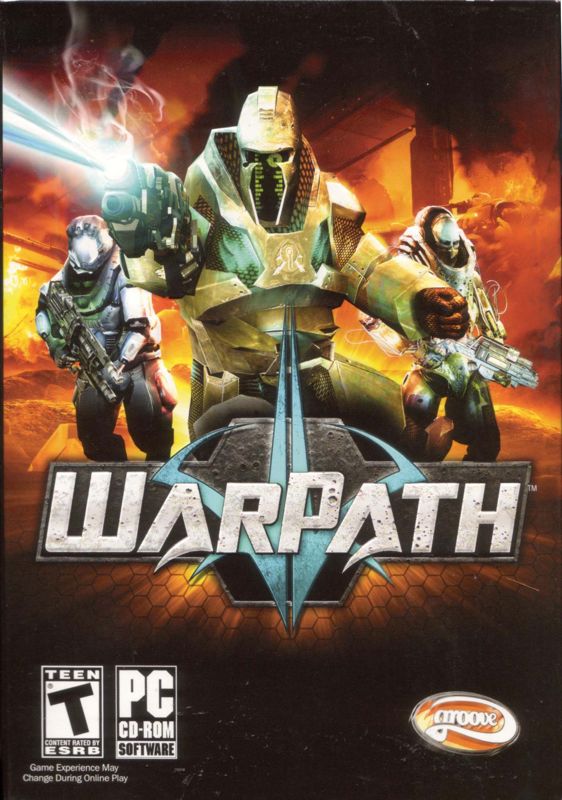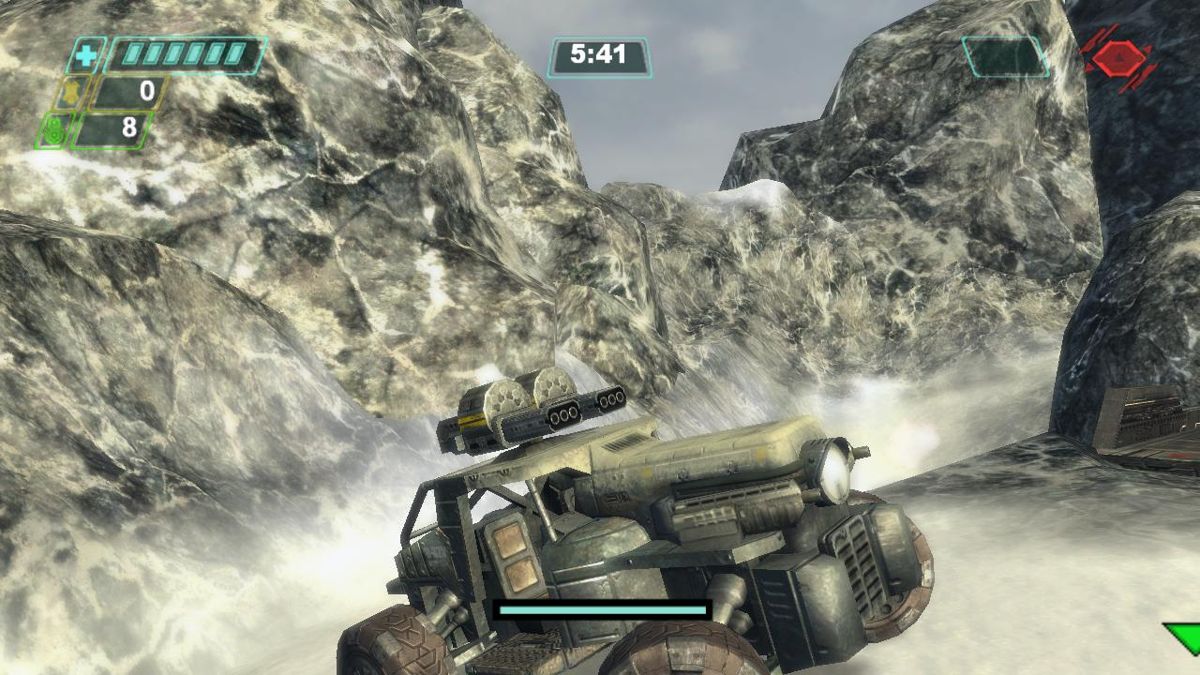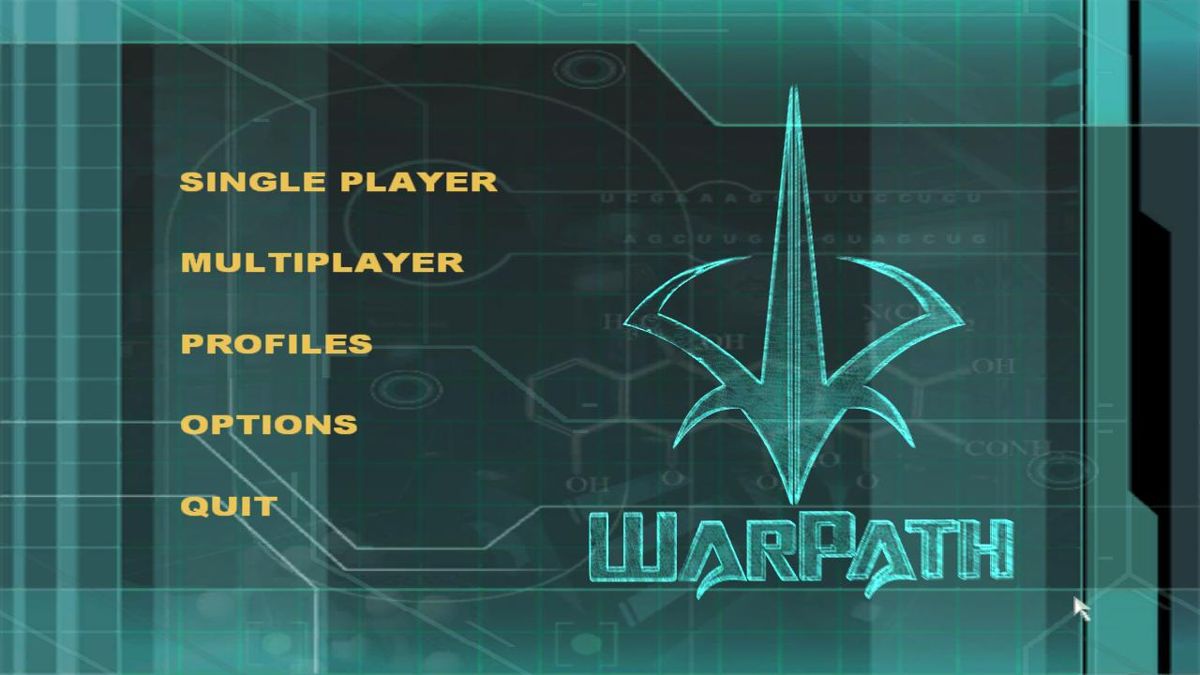Retro Replay Review
Gameplay
WarPath delivers a familiar yet refined first-person shooter experience built on the same foundations as Pariah. Players once again have access to a portable healing tool that restores health on the fly, enabling aggressive combat tactics without the need to hunt for health packs. Movement is a standout feature: sprinting at breakneck speed blurs the world around you, rewarding fast-paced play but occasionally making precise aiming more challenging.
(HEY YOU!! We hope you enjoy! We try not to run ads. So basically, this is a very expensive hobby running this site. Please consider joining us for updates, forums, and more. Network w/ us to make some cash or friends while retro gaming, and you can win some free retro games for posting. Okay, carry on 👍)
The singleplayer campaign unfolds as a turn-based, Risk-style map overlay where you vie for control of Kaladi’s fifteen arenas. Each turn, you choose an arena to attack that’s currently held by one of the rival factions. Winning an assault grants you not only territory but, in key matches, the chance to unlock new and more powerful weapons. Should you conquer all fifteen arenas, you’re granted access to a special “boss” arena—an optional gauntlet that tests your mastery of the game’s mechanics.
While the singleplayer mode incorporates strategy elements, WarPath truly shines in its multiplayer. Matches feel reminiscent of Unreal Tournament, with high-speed duels across diverse maps and an upgrade system carried over from Pariah. As you eliminate foes, you collect weapon energy cores that can be instantly applied to boost firepower, rate of fire, or add special ammo types. This in-match progression keeps engagements fresh and encourages opportunistic play—grab that core, swap to a heavier weapon, and turn the tide of battle.
In terms of weapon diversity, you’ll cycle through classic loadouts—assault rifles, shotguns, plasma-based pistols—as well as specialized gear unique to each faction. The upgrade paths between singleplayer levels reward skillful play, while multiplayer pickups give casual skirmishes an unpredictable edge. Controls are generally responsive, though the sprint blur can sometimes interfere with precise shots. Overall, the gameplay loop is addictive, encouraging repeated runs through the campaign and frequent online sessions.
Graphics
As a budget-priced title, WarPath doesn’t push the bleeding edge of visual fidelity, but it manages to present a clean and cohesive aesthetic. Environments range from industrial outposts to lush forests on the planet Kaladi, each rendered with enough detail to distinguish one map from another. Textures are serviceable, and lighting effects—especially muzzle flashes and explosion glows—add punch to firefights.
Character and weapon models are sturdy, if a bit blocky by modern standards. The three factions (Ohm, House of Kovos, Human Coalition) each have distinct silhouettes and color palettes, which helps in fast-paced multiplayer matches where quick identification is key. Animations for reloading, healing, and melee interactions feel weighty and deliberate, contributing to a tactile sense of combat.
Special effects are a highlight: the healing tool emits a bright, swirling beam that stands out in darker corridors, and sprinting speed blur gives a visceral sense of momentum. Particle systems for sparks, smoke, and debris hold up well, though performance can dip in the most crowded firefights on lower-end hardware. Thankfully, a straightforward graphics options menu allows players to dial down shadows or texture resolution to maintain smooth framerates.
Overall, the graphics strike a solid balance between playability and atmosphere. You won’t mistake WarPath for a triple-A blockbuster, but its visual design serves the gameplay perfectly—clarity over flash, with just enough flair to keep you immersed in each arena.
Story
The narrative backdrop of WarPath centers on the resource-rich planet Kaladi, where three distinct races clash in a bitter war for survival and dominance. While storytelling takes a backseat to action, a lightweight campaign framework provides context for each battle and helps differentiate objectives from one arena to the next.
The Ohm are a cyborg-like race whose dependence on Kaladi’s minerals drives their expansionist agenda. Half-machine, half-organic, they present a visually striking faction with weapons that blend futuristic energy rifles and mechanized exoskeleton abilities. Their motivation is simple: without Kaladi’s resources, their very existence is threatened.
In contrast, the House of Kovos comprises sentient robots driven by a religious doctrine that dictates Kaladi is their “promised world.” They field precise, laser-based weaponry and rely on disciplined formations. Their dogmatic zeal makes them formidable foes, and the campaign menu teases ideological diatribes whenever you engage or defend their strongholds.
The underdog Human Coalition consists of displaced humans seeking to carve out a new home. They favor more conventional firearms and guerrilla tactics, setting ambushes from cover and using hit-and-run strategies to even the odds against better-equipped enemies. Their story arc revolves around reclaiming dignity and a place in the universe after being cast aside by larger powers.
While WarPath doesn’t deliver cinematic cutscenes or deep character development, the Risk-style conquering map and brief mission intros build enough narrative momentum to make each victory feel meaningful. It’s a lean approach to storytelling that complements the game’s pace without overstaying its welcome.
Overall Experience
WarPath offers a compelling package for those who crave fast-paced shooting action on a budget. The fusion of strategic overland conquest with high-octane arena battles creates a unique singleplayer experience, while the robust multiplayer keeps you coming back for more team-based skirmishes and free-for-all mayhem.
Strengths of the game include its addictive upgrade system, fleet-footed movement, and faction variety. The interplay between portable healing, sprint blur, and in-match weapon enhancements elevates the combat beyond simple run-and-gun. You’ll appreciate the sense of progression as you unlock new weapons or earn energy cores mid-match.
On the flip side, the game’s storyline is serviceable but thin, and graphics—though effective—show their budget origins. Occasional frame drops and repetition in arena layouts can dampen the experience for some players. Still, the lean narrative and clean level design mean you can jump in without wading through lengthy cutscenes or tutorials.
For fans of Unreal Tournament-style combat who don’t want to break the bank, WarPath is a solid pick. The multiplayer remains the highlight, but the inventive singleplayer map mode and faction-specific arsenals ensure that each play session—solo or online—offers a distinct taste of the war for Kaladi. If you value speed, upgrades, and straightforward shooting thrills, WarPath delivers worthwhile bang for your buck.
 Retro Replay Retro Replay gaming reviews, news, emulation, geek stuff and more!
Retro Replay Retro Replay gaming reviews, news, emulation, geek stuff and more!









Reviews
There are no reviews yet.